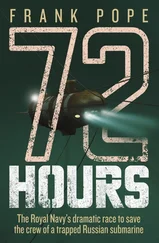As technology improved, so the slaughter worsened. Steam ships could pursue and kill the fastest species, whilst factory ships could process carcasses at sea without having to call at a port. One after the other, blue, sei, fin, humpback, sperm and minke whales were wiped out over most of the ocean. New whaling grounds would be exhausted at most after a decade, sometimes from one year to the next. All told, the twentieth century saw the slaughter of about 3 million whales, leaving only between 10,000 and 25,000 blue whales in the whole world. The killing goes on still, thanks to the ‘scientific whaling’ loophole (more like a chasm) in the current International Whaling Commission (IWC) system. Norway, Iceland and Japan continue to kill whales today using the fig-leaf of scientific research, and these countries and their allies have recently tried to overturn the whaling moratorium altogether at the IWC. Whilst it is plausible that stocks of smaller whales like minkes can support a sustainable annual catch, there is a stronger case for leaving the whales alone altogether until their numbers – and the marine ecosystem generally – can properly recover.
Although no whale species were driven to outright extinction, some marine animals have been extinguished completely. The Steller’s sea cow, a gentle and intensely social Pacific species, was wiped out for its meat and blubber in the mid-eighteenth century. The great auk – a flightless penguin-like seabird that once lived in huge numbers around the North Atlantic – was also exterminated in a determined campaign of slaughter. Once clubbed to death, the bodies would be plunged into boiling water, their feathers torn out (for stuffing pillows and mattresses, as well as adorning hats), whilst the carcass would be boiled for its oil (used for lighting lamps) and the remainder used to fuel the fires that powered the whole ghastly enterprise. 23 Конец ознакомительного фрагмента. Текст предоставлен ООО «ЛитРес». Прочитайте эту книгу целиком, купив полную легальную версию на ЛитРес. Безопасно оплатить книгу можно банковской картой Visa, MasterCard, Maestro, со счета мобильного телефона, с платежного терминала, в салоне МТС или Связной, через PayPal, WebMoney, Яндекс.Деньги, QIWI Кошелек, бонусными картами или другим удобным Вам способом.
Ship crews would move onto remote islands with the sole purpose of killing as many birds as possible during the summer months. Even on the brink of extinction, the hunting continued: the last breeding pair of great auks were beaten to death in Iceland on 3 June 1844, and their single remaining egg was broken. 24 Конец ознакомительного фрагмента. Текст предоставлен ООО «ЛитРес». Прочитайте эту книгу целиком, купив полную легальную версию на ЛитРес. Безопасно оплатить книгу можно банковской картой Visa, MasterCard, Maestro, со счета мобильного телефона, с платежного терминала, в салоне МТС или Связной, через PayPal, WebMoney, Яндекс.Деньги, QIWI Кошелек, бонусными картами или другим удобным Вам способом.
Early seafarers were not exactly sentimental about the creatures they encountered. William Dampier, writing about the fur seals he saw on Juan Fernandez island in 1709, marvelled at their beauty, agility and grace, ‘how they lie at the top of the water playing and sunning themselves’ as he put it. But like everyone, Dampier soon got down to business. ‘A blow on the nose soon kills them,’ he added helpfully. ‘Large ships might here load themselves with seal-skins and Trane-oyl [oil]; for they are extraordinary fat.’ 25 Конец ознакомительного фрагмента. Текст предоставлен ООО «ЛитРес». Прочитайте эту книгу целиком, купив полную легальную версию на ЛитРес. Безопасно оплатить книгу можно банковской картой Visa, MasterCard, Maestro, со счета мобильного телефона, с платежного терминала, в салоне МТС или Связной, через PayPal, WebMoney, Яндекс.Деньги, QIWI Кошелек, бонусными картами или другим удобным Вам способом.
And large ships did just that, reducing the island’s enormous colonies of seals down to an eventual grand total of just two hundred individuals. One American naval captain related in 1891 how the shooting of fur seal females at sea left their offspring on the shore to starve: ‘Thousands of dead and dying pups were scattered over the rookeries, while the shorelines were lined with emaciated, hungry little fellows, with their eyes turned towards the sea uttering plaintive cries for their mothers, which were destined never to return.’ 26 Конец ознакомительного фрагмента. Текст предоставлен ООО «ЛитРес». Прочитайте эту книгу целиком, купив полную легальную версию на ЛитРес. Безопасно оплатить книгу можно банковской картой Visa, MasterCard, Maestro, со счета мобильного телефона, с платежного терминала, в салоне МТС или Связной, через PayPal, WebMoney, Яндекс.Деньги, QIWI Кошелек, бонусными картами или другим удобным Вам способом.
Species after species was relentlessly pursued. Walruses were boiled down for their oil. Giant tortoises were seized in raids on the Galapagos Islands and kept alive by being turned on their backs in ships’ holds for months at a time before being eaten for their meat. In ‘one of the great wildlife exterminations of colonial times’, as marine historian Callum Roberts puts it, an original population of 50–100 million hawksbill turtles in the Caribbean was reduced to just a few thousand (it is still critically endangered worldwide). 27 Конец ознакомительного фрагмента. Текст предоставлен ООО «ЛитРес». Прочитайте эту книгу целиком, купив полную легальную версию на ЛитРес. Безопасно оплатить книгу можно банковской картой Visa, MasterCard, Maestro, со счета мобильного телефона, с платежного терминала, в салоне МТС или Связной, через PayPal, WebMoney, Яндекс.Деньги, QIWI Кошелек, бонусными картами или другим удобным Вам способом.
Sea otters, which once swam in their millions in Pacific coastal waters from Mexico to the Arctic, were reduced to fewer than two thousand by 1911. As industrialisation proceeded, the depletion of whole areas could speed up: when seal colonies were first discovered in the remote South Shetland islands in 1820, a quarter of a million were killed and the population brought to near-extinction within just three years. 28 Конец ознакомительного фрагмента. Текст предоставлен ООО «ЛитРес». Прочитайте эту книгу целиком, купив полную легальную версию на ЛитРес. Безопасно оплатить книгу можно банковской картой Visa, MasterCard, Maestro, со счета мобильного телефона, с платежного терминала, в салоне МТС или Связной, через PayPal, WebMoney, Яндекс.Деньги, QIWI Кошелек, бонусными картами или другим удобным Вам способом.
Читать дальше











